Choosing a front molding
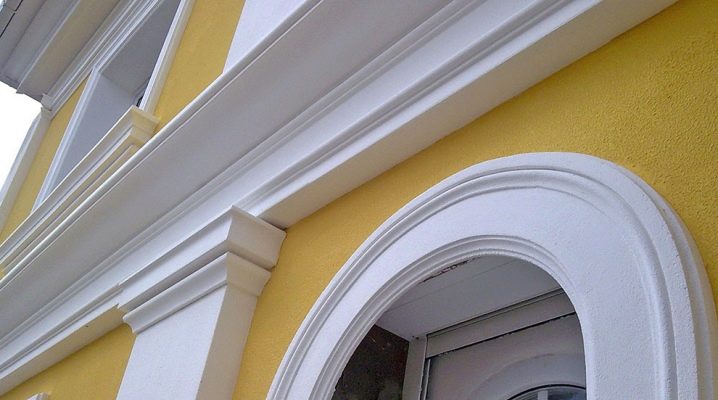
Facade moldings are special decorative overlays that allow you to add sophistication to even the most ordinary building. Such designs also help to hide various defects that are present on the facade.
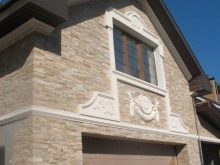
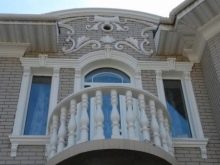
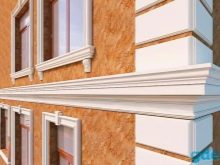
Peculiarities
These moldings can be made from various materials. The main thing is that they can withstand temperature changes, fluctuations in humidity. Often, such designs are made according to individual orders.
Facade moldings make it easy to transform a building, making it more expressive. Moreover, they usually have an affordable cost. Such decorative items are easy to paint. Most often they are coated with a pigment of the same shade as the building.
Sometimes these moldings are waxed on top. This will protect them from moisture penetration. In addition, the substance gives the structures a beautiful, light sheen.
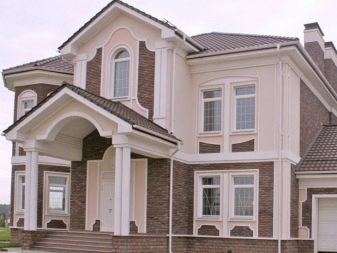

Varieties
Facade moldings may differ from each other depending on what material they are made of.
-
Styrofoam... It is this material that is most often used in the manufacture of such decorative structures. It is as easy to install as possible. In addition, foam moldings have good strength, and are easily amenable to various types of treatments. Also, models made from this material have a modern locking system that will allow installation without visible seams. Styrofoam samples have an excellent appearance, they are quite durable, and the cost for them is relatively low. To increase the water resistance of the material, it is covered with special fiberglass. This coating also significantly increases the mechanical strength of products, protects them from the negative effects of ultraviolet radiation.


- Expanded polystyrene... This material is considered a type of foam. The curly cutting technology allows you to make a variety of elements from it. Expanded polystyrene structures are lightweight, so it is easier to work with them. In addition, such samples are coated with special strengthening and coloring compounds, this gives them a more decorative look, increases their strength and durability. With proper installation, it will even be possible to avoid joints when connecting individual moldings. During operation, it will be necessary to renew the paintwork (approximately once every 10 years). Sometimes special coatings are used that imitate a wooden surface.
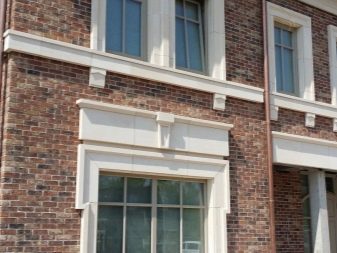
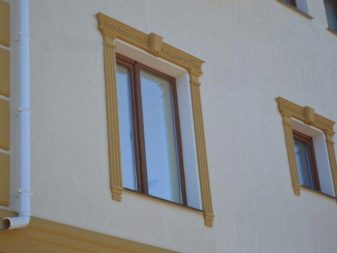
- Lightweight stone... Such models are made on the basis of marble chips and white cement. Most often, the color of such a material is white, but sometimes tinting is added to the mass. Moldings made of lightweight stone will mimic natural stone. When installing such structures, the selection of joints is considered an element of decor. When installing these moldings, special requirements are imposed on the strength of the facade.
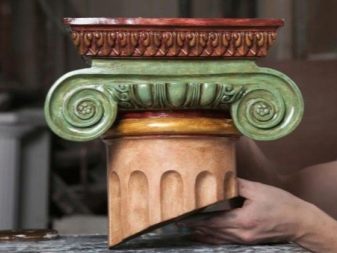
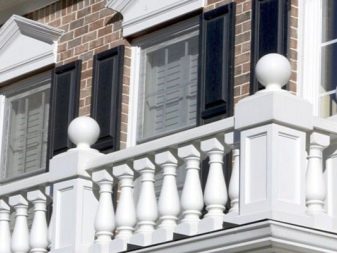
- Gypsum... Gypsum moldings are relatively strong. And also they have a small mass, which simplifies the process of their installation. This material is highly hygroscopic, which is a disadvantage. Moreover, it is fragile. Even with minor shock loads, the gypsum will begin to crumble easily. To protect the material from moisture penetration, various impregnations and special protective coatings are used.But still, plaster models are rarely used in the design of external facades. Sometimes they are taken as a decoration for windows.
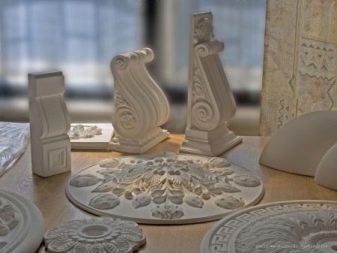
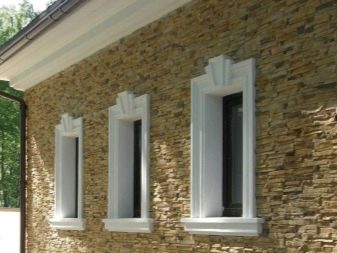
How to choose?
Before purchasing a molding for exterior decoration, you should pay attention to some significant nuances of choice. So, be sure to consider the style of the building. When decorating houses in an ascetic modern style, preference should be given to simple, thin models without ornaments and large decorative details. Otherwise, you can overload the design.
Embossed volumetric moldings are perfect for classic-style houses. Vegetable overlays are best purchased for Baroque buildings.
The dimensions of the structure are also important. Bulky and wide moldings should be purchased for large houses, narrow models are suitable for small buildings.
The dimensional values of the moldings themselves depend on their purpose. So, for framing door and window openings, narrower samples are used.
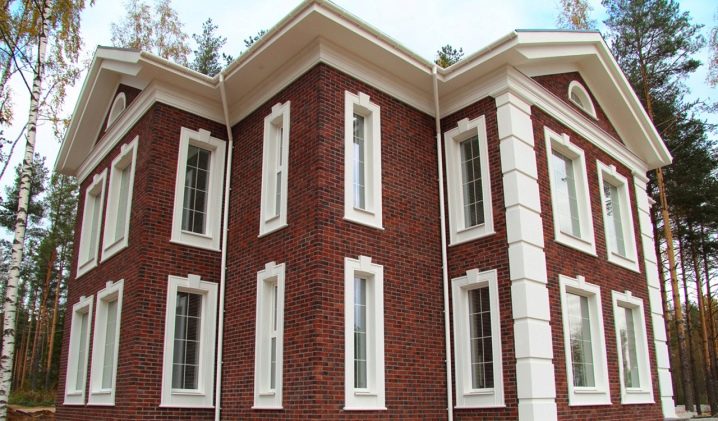
If you are planning to purchase moldings made of heavy material, then calculate in advance whether the building facade can withstand such loads... In most cases, models made from natural materials can be replaced with lightweight designs with imitation.
Remember that it is better to purchase moldings with special protective coatings. Such models will be able to serve as long as possible. Protective impregnations can significantly increase the strength and reliability of decorative items.
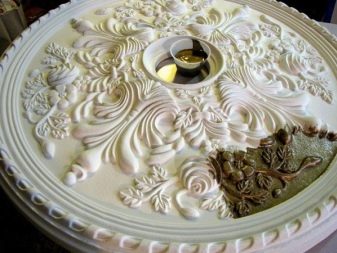
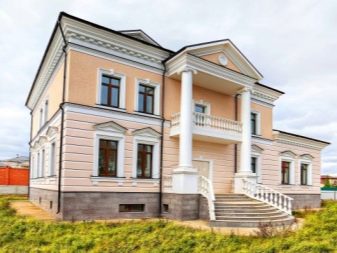
Installation methods
Facade moldings can be easily installed with your own hands without the help of specialists. First you need to prepare the front surface. It is completely cleaned of debris and dust. Sometimes it is pre-leveled using plaster.
Next, the marking is carried out on the working surface. After that, the wall is examined again to check the accuracy of all lines. First, parts are fixed without an emphasis (most often window sills). The following pieces will hold onto them. To prevent the parts from dropping, it is better to make additional stops in the form of finishing nails. After final fixation, they are removed.
The structure is measured from below, after which the desired ends are sawed off. Models made of simple foam can also be sawed well with an ordinary hacksaw. Next, the adhesive is prepared according to the instructions on the package. The resulting adhesive mass is applied with a spatula to the work surface and to the moldings themselves.
If it is too hot outside, then it is recommended to moisten the wall with water.
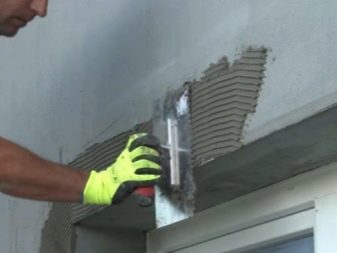
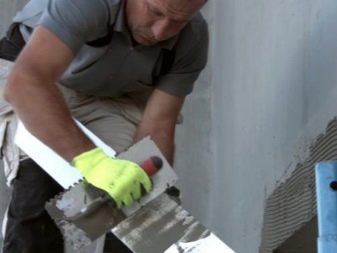
The material is tightly pressed against the facade. All excess glue is removed with a spatula. Make sure that the bottom does not drop. The upper part of the decor is applied to the surface, while the cut areas are necessarily marked.
The side parts are prepared in the same way. Having combined all the parts, they are pressed tightly, all excess glue is removed again.
In order to give the structure maximum strength, the material must be fixed in several areas at once using dowels.
And also sometimes they carry out installation using glue and self-tapping screws. Moreover, for every 2 meters, there are 3-5 such fasteners.














The comment was sent successfully.